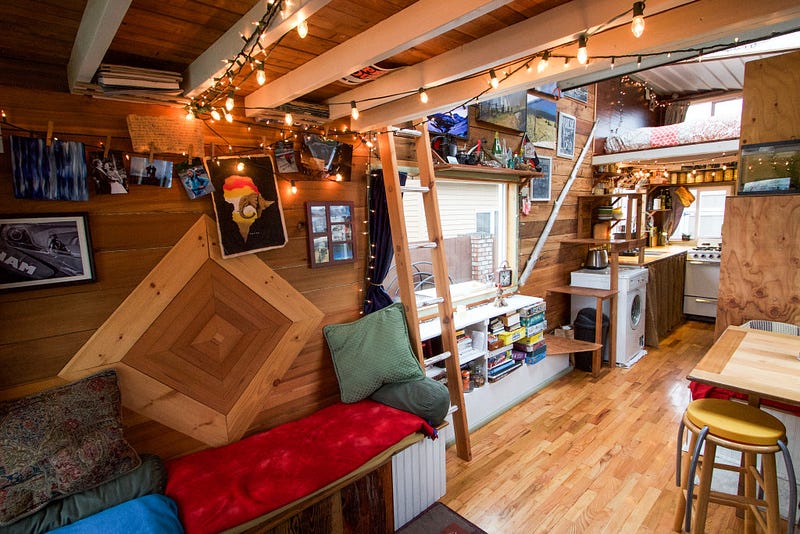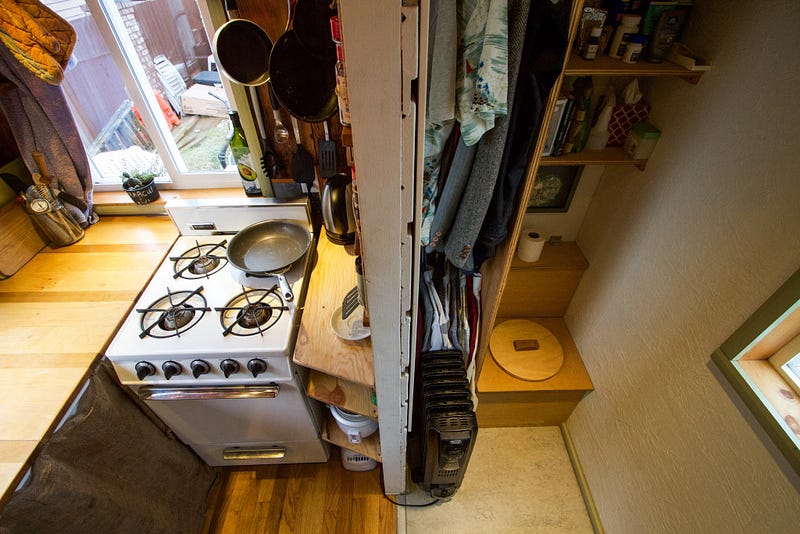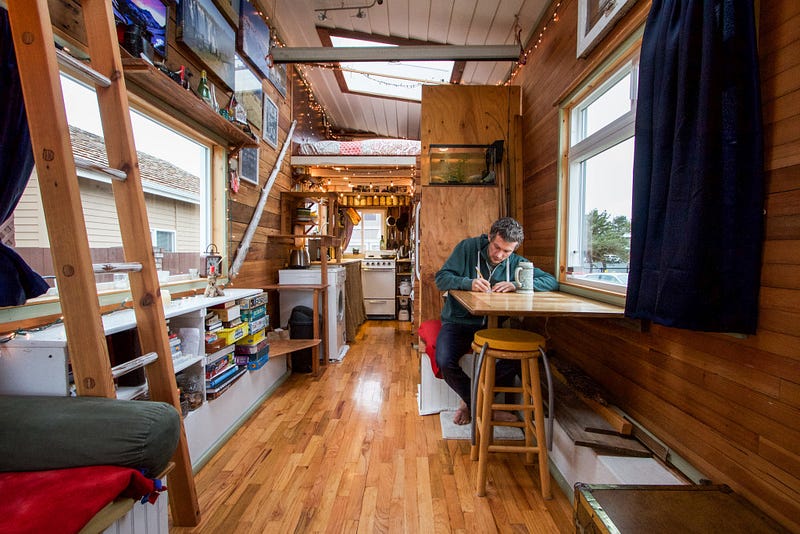Tiny Home, Big Heart
Hospitality in less than 300 square feet
STORY BY ERIK SWANSON | PHOTOS BY BEATRICE HARPER
A wall made of cedar wood from a 1920s home is covered in photographs of family, friends and images of Pacific Northwest landscapes. Soft, white lights shine on the opposite wall made from recycled fence wood. Everything has its place. Everything is intentional. Brad Widman’s home is warm. And it is very, very small.
Owning a home at the age of 24, for many people, may be nothing but a distant dream. Brad lives that dream, and accomplished it for little more than $9,000.

According to the 2010 U.S. Census, the average home’s square footage is 2,392. The movement for smaller living is largely undefined but the Small House Society defines a small home as one that is less than 500 square feet. Brad’s home totals 261.
Wanting to move out of his parent’s house, but not wanting to pay rent, he decided to build a small space that he could move and modify as he pleased. His tiny home looks and feels like a home, and it can roll down the freeway.
Brad committed to building his home when his boss found a moldy old camper that someone was giving away. It was just what he needed.
The year and a half it took to build his tiny home began with destruction. Hammers, saws, jackhammers and hacksaws tore away. Brad was left with a solid, metal trailer for the foundation of his small abode.

On any given winter evening a wind blows in from the south on Sandy Point, the spit of land north of Lummi Island where Brad’s home is currently parked. Norah Jones plays on the stereo while he cooks a dinner of chicken and quinoa.
Various signs of beach combing and mountaineering are scattered throughout the space. Carabiners hang from a drop-down projector screen. Photos of a motorcycle he had to abandon in Iowa and a worn window frames a picture of Locust Beach at low tide.
Five thin planks of wood tacked to the kitchen wall hold cinnamon sticks and tea spices in glass mason jars along with a collection of utensils and mugs. Empty jars of peanut butter are filled with flour, squiggly noodles and beans housed on the wall above the stove. The countertop is made from wood donated by Lynden Door.
Above the kitchen is his lofted bedroom and the most comfortable bed he’s ever slept on, Brad says. e. Less is more and what he has he wants to be of a quality that lasts.
You could toss a pillow to the twin bed across the house in the other loft — a guest bedroom that doubles as a storage space.
Brad and his friends built every part of the home, even the compostable toilet.
He used Craigslist and other resources to find materials. He learned about a federal grant that replaces any refrigerator built before 1992 for free and took full advantage.
Electricians, carpenters and framers helped him get to work on his tiny home starting in August 2013. Brad spent a lot of time on the Internet simply figuring out the answers to his construction questions.
“In some ways it was the blind leading the blind,” Brad says in reference to his team of amateur volunteers.

The knowledge of how to actually build a tiny home came slowly, as necessary.
“Google can teach you how to build a house,” he says.
Brad loves his home. He says he sometimes comes home from school or work and can’t believe it’s his. His goal was to create a sanctuary for himself and his friends; a peaceful place for retreat and refocusing. He has accomplished just that.
Currently, Brad wants to build another tiny home. He’ll need another free trailer to hack apart. The challenge this time around — building a space that is even smaller.
